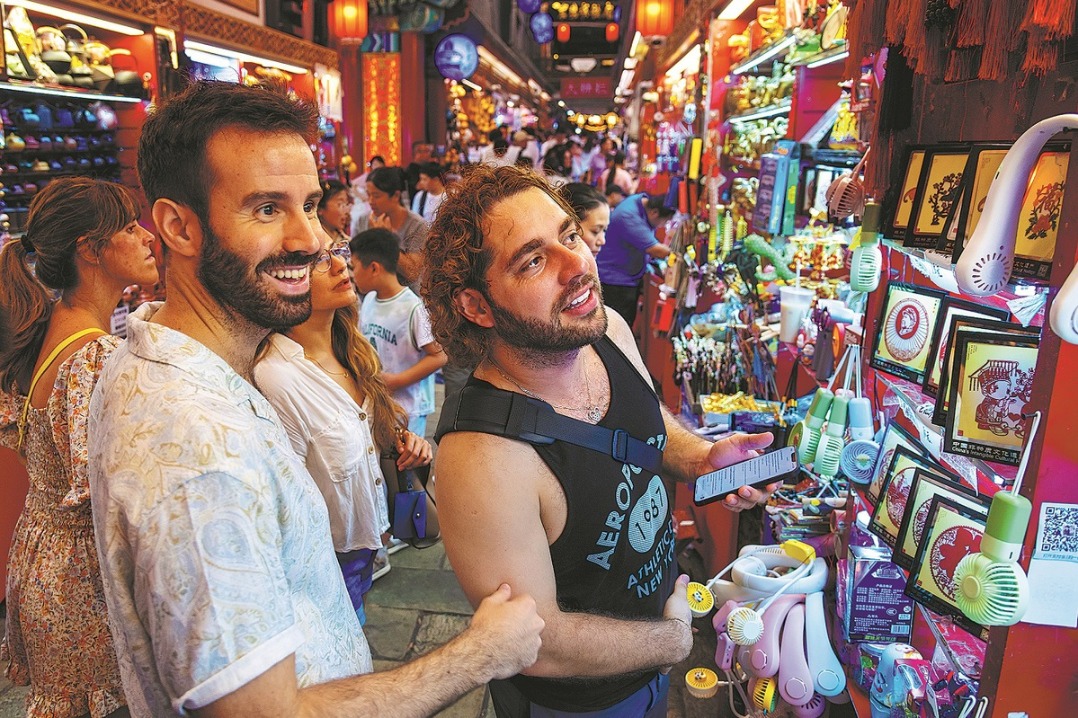Engineer builds a bridge to his dream in Bangladesh

Holding fast to their dreams and rising to face challenges, young Chinese have left an indelible mark through their work in support of people's well-being in countries with the Belt and Road Initiative projects.
They have advanced such projects with big implications for the relevant countries in the fields of infrastructure construction and healthcare, shared skills with co-workers and made friends with local people.
Born in 1994, Zhou Lin joined the China Railway Major Bridge Engineering Group straight after graduating from university. He has worked for years on the Padma Multipurpose Bridge project in Bangladesh, a bridge that could shorten the trip between the country's capital, Dhaka, and its southwestern regions to just 10 minutes from seven to eight hours.
The young man does not talk much, but he is not afraid of innovation, and through years of hard work, he has become the deputy manager of the project's engineering department.
Located in an area with complicated geological conditions, the project brought multiple challenges to Zhou and his colleagues, requiring the adaptation of a number of original technologies. At first, he would turn to the head of the engineering department for advice when encountering difficulties. As time passed, he learned to solve problems based on research before reaching out to senior engineers.
"I still remember the time when I designed a lifting beam and made calculations partly based on data from an online reference book. When I showed the calculations to a senior engineer, he asked me to clarify the source of each data point and not to take the risk of using wrong references," Zhou recalls. "I really learned a lesson that day. From then on, I never forget to verify the details."
The engineering workers on the project wrote suggestions to optimize construction procedures on a regular basis, and the project leader revised the suggestions word by word. "Each time, I would carefully compare the revisions and my original version, and reflect on how to improve in terms of logic and expressions," he adds.
So far, he has participated in the application of seven patents, three of which have already been licensed in China. Zhou has also mentored younger engineers.
"While on site, we often need to make temporary designs for architectural structures. I think the younger engineers can learn more by doing it independently. So I usually make a sketch and explain the structure before assigning the work, and then I check their progress frequently," he says.
The bridge is located above a river with banks on loose soil. Downpours in the rainy season often caused flooding, putting the staff accommodation and construction facilities at risk of serious damage.
Not long after Zhou started working on the project, the area was lashed by days of torrential rain, with the river rising to a dangerous level. He was among the first to join the flood-relief team. In the face of rolling waves, he worked side by side with other team members, establishing effective procedures to prevent flooding with sandbags.
After years in Bangladesh, his face is now deeply tanned, and he is more than happy to remain in the country.
"The local people are friendly to Chinese, and they often take us shopping or to taste local flavors in our spare time," he says.
Zhou also likes to share what he has learned on the project with young Bangladeshi technical staff members, and discuss technical problems with them to help train the local engineering talent.
He says his dream is to become an expert in bridge building, and that he's happy "to do something to improve the infrastructure" in countries involved in the Belt and Road Initiative.
According to Mostak Ahamed Galib, executive director of the cross-cultural communication and BRI research center at Wuhan University of Technology, the Padma bridge project will bring benefits to Bangladesh in the coming years.
"The bridge is considered a 'bridge of hope' in Bangladesh. Its opening is expected to drive an increase of the country's annual GDP by 1.5 percent and bring new opportunities to the youth in 21 southwestern regions of the country," Galib says.
"Chinese youth in the new era have set a role model for the over 50 million young people in Bangladesh in jointly creating a better future for humanity."
Xinhua






























